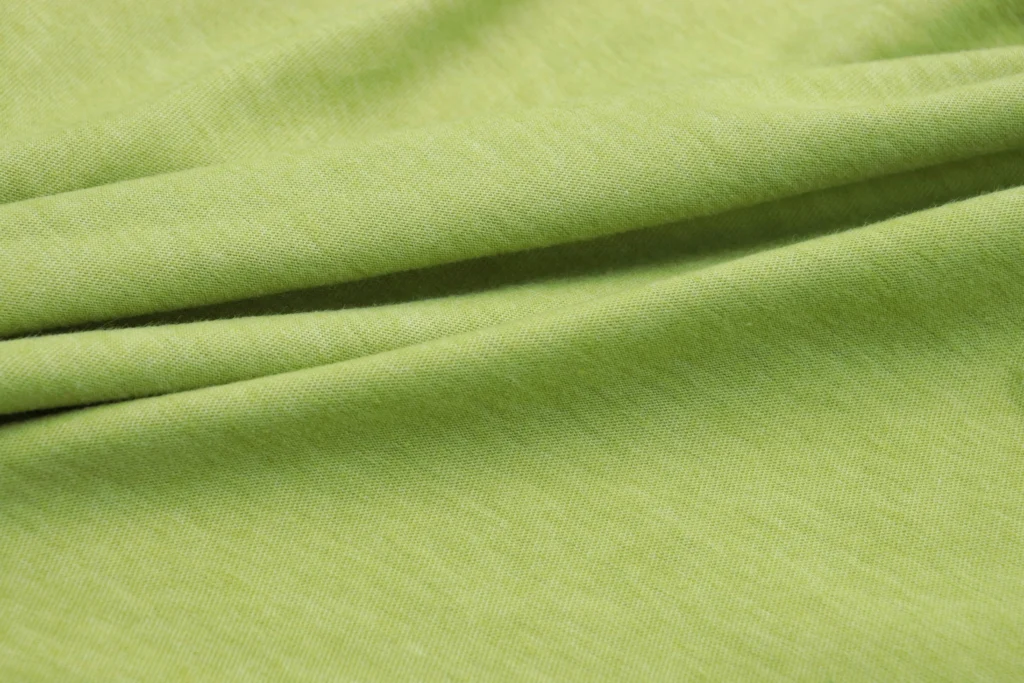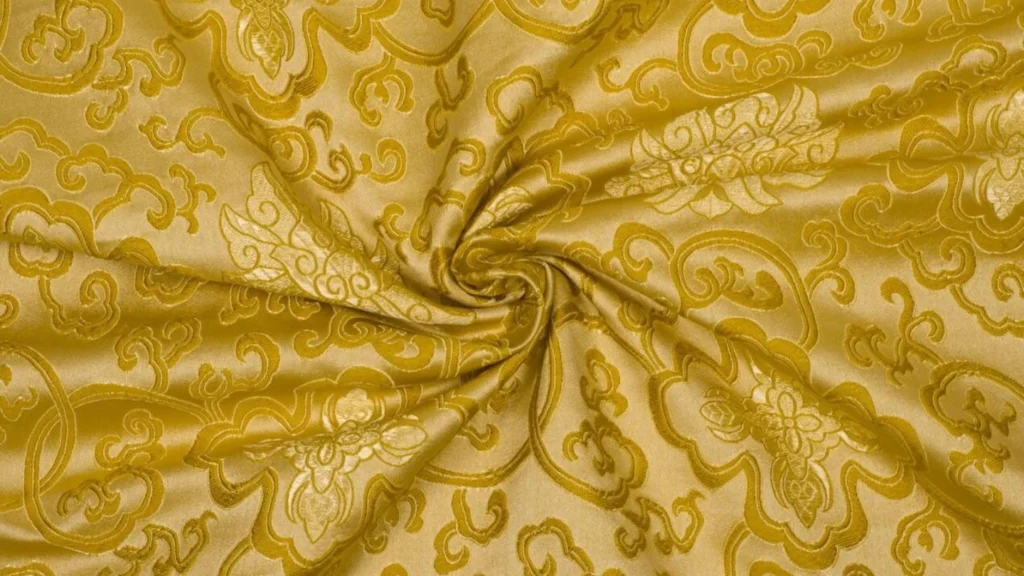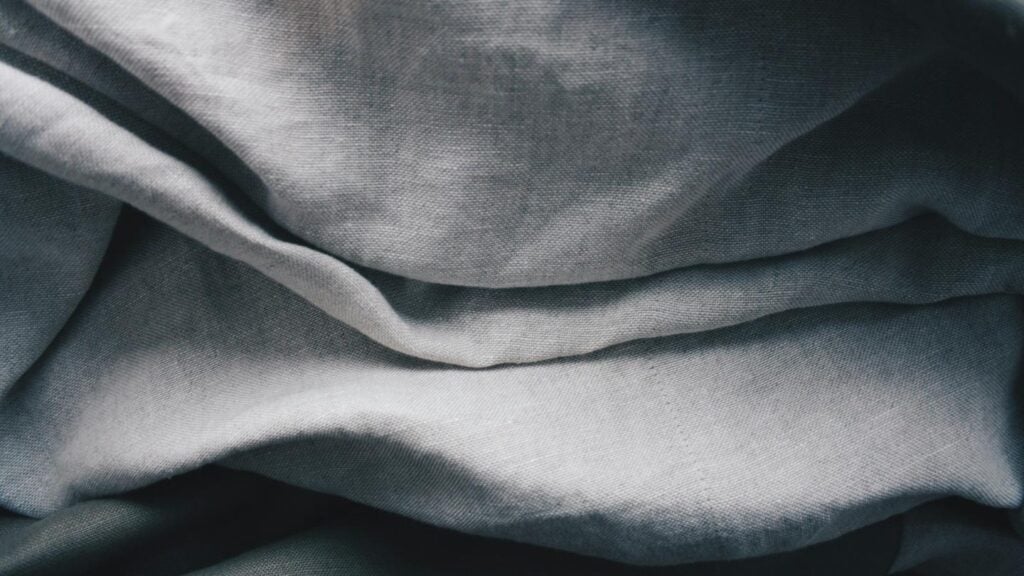2 – Viscose Fabric Composition
3 – Viscose Fabric vs Other Fabrics
4 – Viscose Fabric Is Manufactured
5 – Common Uses in Fashion
6 – Understanding the Environmental Impact of Viscose Fabric
7 – Exploring Price Points and Value for Money
8 – Conclusion
9 – FAQs
What is Viscose Fabric?
Viscose fabric, often referred to as rayon, is a versatile, semi-synthetic material made from regenerated cellulose. It is derived primarily from wood pulp or cotton linters, which are treated with chemicals to transform them into fibers. The process makes Viscose one of the most popular and affordable alternatives to natural fibers like silk, while still offering a similar look and feel.
Viscose is soft, breathable, and has a silky texture, which is why it is often used in clothing such as dresses, blouses, and linings. It is also found in home textiles, including curtains and upholstery, due to its smooth appearance and drape.
Key characteristics of Viscose fabric include:
- Softness and Comfort: Known for its soft feel, Viscose is often compared to silk for its smooth texture and breathability.
- Absorbency: Viscose is highly absorbent, making it suitable for warm weather clothing and even towels or bed linens.
- Versatility: The fabric can be woven or knitted and is available in various finishes, from matte to glossy, allowing it to mimic other luxurious fabrics.
While Viscose offers many benefits, it also comes with some challenges. The fabric’s production process is chemically intensive, and there are concerns regarding environmental impact, particularly when it comes to water usage and the disposal of chemicals. However, advancements in sustainable production methods, such as lyocell (a more eco-friendly version of Viscose), are helping to address these issues.
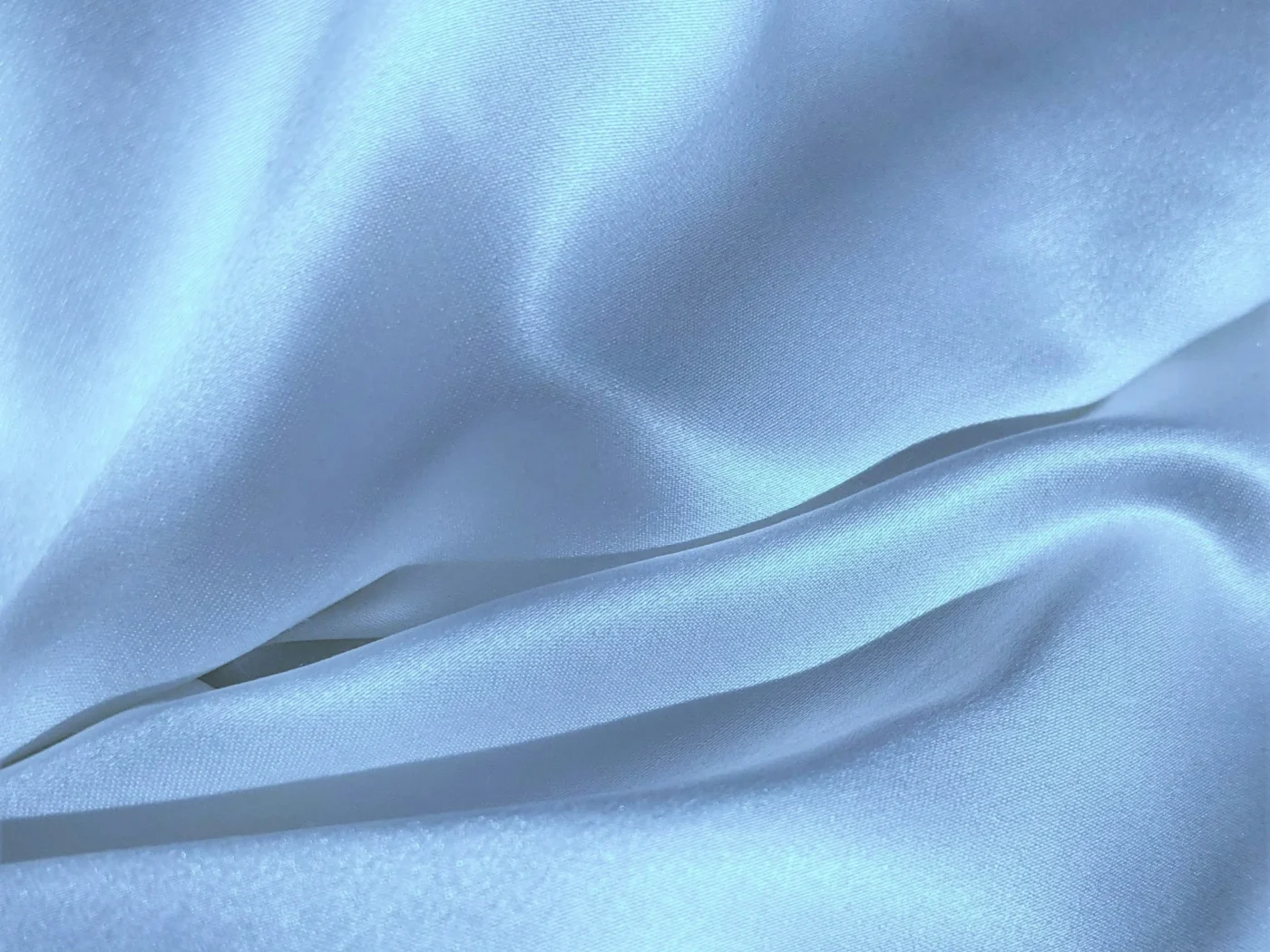
- Viscose is made from regenerated cellulose, typically from wood pulp or cotton.
- Soft, breathable, and affordable, it is a popular alternative to silk.
- Sustainability challenges are being addressed through eco-friendly manufacturing techniques.
Viscose remains a highly adaptable fabric, combining comfort, style, and an attractive price point, making it a staple in the fashion and textile industries.
Viscose Fabric Origin
Viscose fabric was first developed in 1891 by French chemist Hilaire Marin Roussel as a cheaper alternative to silk. Made from cellulose derived from wood pulp or cotton linters, Viscose is created by dissolving cellulose in chemicals to form a viscous solution, which is then spun into fibers. The name Viscose comes from the solution’s viscous nature.
Viscose quickly became popular, especially during World War I, when silk was scarce. Over time, the production process has evolved, and more sustainable versions, like lyocell, have been developed.
Viscose Fabric Composition
Viscose fabric is made from cellulose, typically extracted from wood pulp or cotton linters. This natural material is chemically processed into a viscous solution, which is then spun into fibers. While Viscose is derived from a natural source, the chemical process used to create it classifies it as a regenerated fiber.
Key characteristics include:
- Cellulose-based: Derived from wood pulp or cotton.
- Regenerated fiber: Chemically transformed into a fabric.
- Soft and breathable: Similar to natural fibers like cotton and silk.
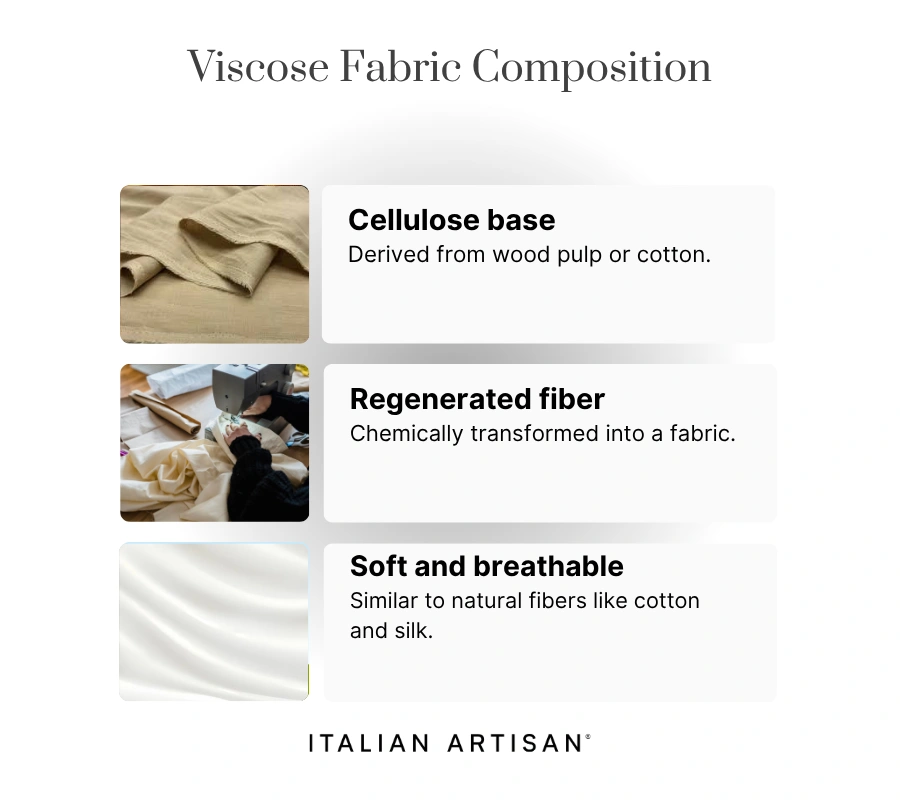
Despite its natural origin, Viscose’s production involves chemicals, which impacts its eco-friendliness unless produced through sustainable methods like lyocell.
Viscose Fabric vs Other Fabrics
Viscose stands out for its silky appearance and feel, but it has distinct differences compared to other fabrics:
- Viscose vs Cotton: Cotton is naturally breathable and soft, but Viscose has a smoother, silk-like texture. Viscose is more absorbent and drapes better, making it ideal for formal and flowy garments.
- Viscose vs Polyester: Polyester is durable, wrinkle-resistant, and less prone to fading, but it lacks the breathability and natural feel of Viscose. Viscose, however, offers superior comfort and a more luxurious texture.
- Viscose vs Silk: Viscose mimics the luxurious look and feel of silk but at a much more affordable price. While silk is more durable and resistant to wrinkles, Viscose offers a similar sheen and softness but is lighter and more breathable.
- Viscose vs Nylon: Nylon is strong and resistant to wear but lacks the softness and natural drape of Viscose. Viscose is preferred for garments that require fluid movement and a soft, natural texture.

How Viscose Fabric Is Manufactured
Viscose fabric is made through a multi-step process that transforms natural cellulose into a smooth, silky fabric. Here’s an overview of how it’s produced:
- Cellulose Extraction: The process begins with extracting cellulose from plant materials like wood pulp or cotton linters.
- Dissolving the Cellulose: The cellulose is dissolved in a mixture of sodium hydroxide and carbon disulfide to create a viscous solution.
- Spinning the Fibers: The viscous solution is forced through spinnerets to form fine fibers. These fibers are then solidified in a chemical bath.
- Washing and Bleaching: The fibers are washed to remove any residual chemicals and are sometimes bleached to achieve the desired brightness.
- Spinning into Fabric: The fibers are spun into yarn, which can then be woven or knitted into fabric.
This process allows Viscose to retain many of the qualities of natural fibers, such as softness and breathability, while providing a smooth, luxurious finish.
Produce your fashion collection with us
Common Uses in Fashion
Viscose fabric is widely used in fashion due to its soft, silky feel, and versatility. It is often found in:
- Dresses and Tops: Viscose’s smooth texture and drape make it perfect for flowy, comfortable clothing like dresses and blouses.
- Lining: Its breathability and soft touch make Viscose a popular choice for lining jackets, skirts, and trousers.
- Skirts and Pants: Viscose provides a nice, relaxed fit for skirts and pants, offering both comfort and a polished appearance.
- Shirts and Blouses: The fabric’s ability to maintain structure while offering softness makes it ideal for shirts and blouses.
- Activewear: Some activewear incorporates Viscose due to its moisture-wicking and breathable properties.

Viscose can be woven into a variety of finishes, from matte to glossy, giving it the flexibility to be used in both casual and formal wear. It’s also an affordable alternative to silk, providing a similar luxurious feel without the high price tag.
Understanding the Environmental Impact of Viscose Fabric
Viscose fabric, while popular for its affordability and comfort, does come with environmental concerns, particularly due to its manufacturing process. Here are the key environmental impacts:
- Chemical Processing: The production of Viscose involves the use of chemicals like carbon disulfide, sodium hydroxide, and sulfuric acid, which can pollute water systems if not properly managed. This makes the process potentially harmful to ecosystems.
- Deforestation: Since Viscose is made from wood pulp, unsustainable sourcing of raw materials can contribute to deforestation. However, some brands are adopting sustainable practices by sourcing wood from certified forests.
- Water Usage: The process of creating Viscose uses large amounts of water, which can put strain on local water supplies in some regions.
- Non-biodegradable: Like many synthetic fabrics, Viscose is not biodegradable, leading to long-term waste issues if not properly recycled or disposed of.
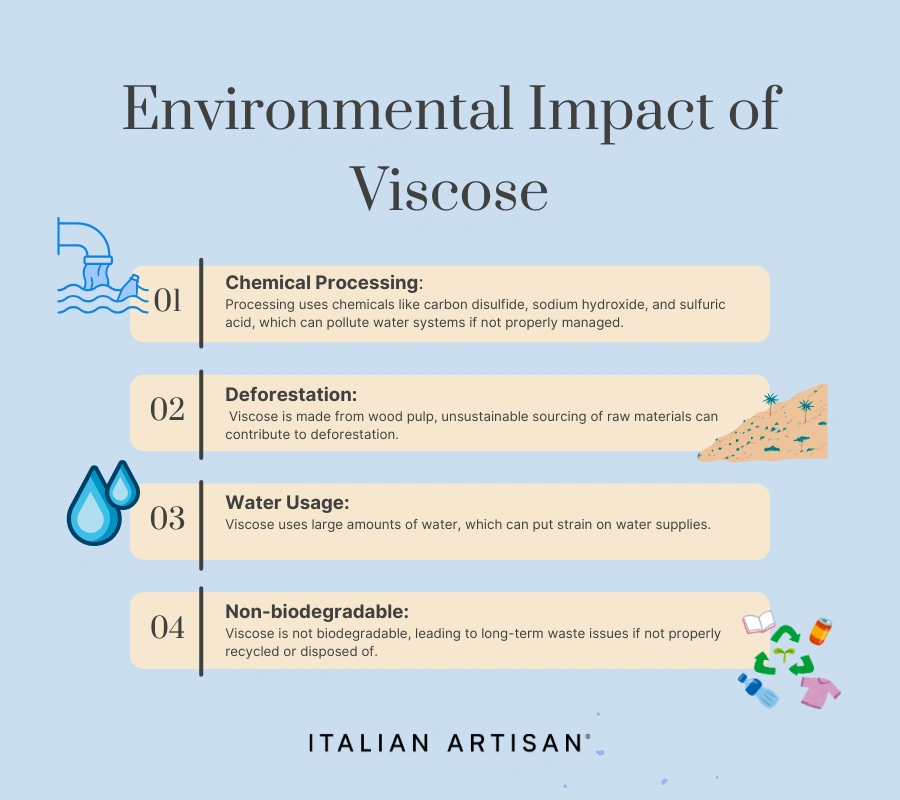
However, there are efforts to make Viscose more sustainable:
- Lyocell: A more eco-friendly alternative to traditional Viscose, made through a closed-loop process that recycles water and chemicals.
- Sustainable sourcing: Some manufacturers are now using wood pulp sourced from responsibly managed forests to reduce the environmental impact.
Exploring Price Points and Value for Money
Viscose fabric is known for being an affordable alternative to natural fibers like silk and cotton. Its price can vary based on factors like quality, blend, and brand. Here’s a breakdown of what influences Viscose pricing:
- Quality: Higher-quality Viscose, especially those made with eco-friendly processes or luxurious finishes, tends to be more expensive. Premium Viscose fabrics may also be softer, more durable, and have a better drape.
- Blends: Viscose is often blended with other materials like cotton, polyester, or spandex. The type of blend can affect the cost, with more premium blends driving up the price.
- Brand and Production Method: Branded fabrics, or those made using advanced or sustainable manufacturing methods like lyocell, can be priced higher due to the additional production costs.
Despite these factors, Viscose remains a relatively affordable fabric compared to natural alternatives like silk. It offers great value for money, combining a luxurious feel with a lower price point, which is why it is widely used in both everyday and high-fashion garments.

Conclusion
Viscose fabric offers affordability, softness, and versatility, making it a popular choice for fashion and textiles. It provides a luxurious silk-like feel at a lower cost, making it ideal for dresses, blouses, and activewear.
While Viscose has environmental concerns, such as chemical processing and water use, more sustainable alternatives like lyocell are emerging to address these issues.
- Viscose is a cost-effective alternative to silk, with a luxurious feel.
- Sustainability efforts, like lyocell, are improving its eco-friendliness.
- Viscose’s affordability and versatility make it a key fabric in modern fashion.
Viscose remains an important and accessible fabric, combining style, comfort, and affordability.
FAQs
1. What is Viscose fabric made of?
Viscose is made from cellulose, typically extracted from wood pulp or cotton linters, which is then chemically processed into fibers.
2. How does Viscose compare to cotton?
Viscose is smoother and has a silk-like texture, whereas cotton is more breathable but lacks the luxurious feel of Viscose.
3. Is Viscose fabric breathable?
Yes, Viscose is breathable and moisture-wicking, making it ideal for warm-weather clothing.
4. Is Viscose fabric eco-friendly?
Traditional Viscose production can have environmental impacts, including chemical waste and water usage. However, sustainable alternatives like lyocell are more eco-friendly.
5. How should Viscose fabric be cared for?
Viscose should be hand-washed or machine-washed on a gentle cycle in cold water and air-dried to maintain its shape and texture.
6. Can Viscose fabric shrink?
Yes, Viscose can shrink if exposed to high heat, so it’s important to wash it in cold water and avoid tumble drying.
7. Is Viscose fabric durable?
Viscose is relatively durable but can be prone to wear and tear, especially if exposed to moisture for long periods. It requires careful care to maintain its quality.
8. Is Viscose a good fabric for summer clothes?
Yes, Viscose is lightweight, breathable, and moisture-wicking, making it a great choice for summer garments.
9. What’s the difference between Viscose and Rayon?
Viscose and Rayon are essentially the same fabric, both made from cellulose, but “Viscose” refers to the specific process used in its production.
10. Can Viscose be recycled?
While recycling Viscose is challenging, more sustainable methods, like using lyocell, aim to improve the recycling potential of this fabric.



